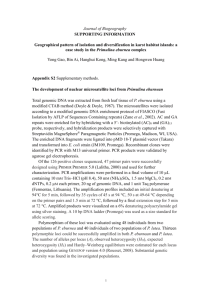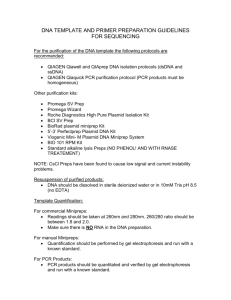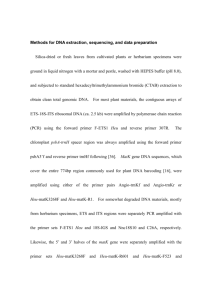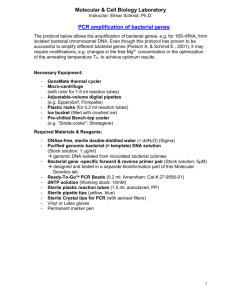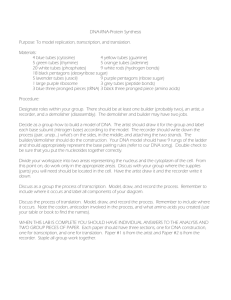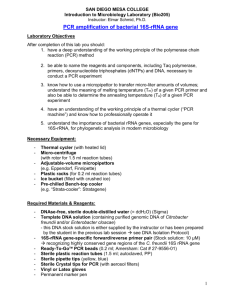Supplementary Information (doc 36K)
advertisement
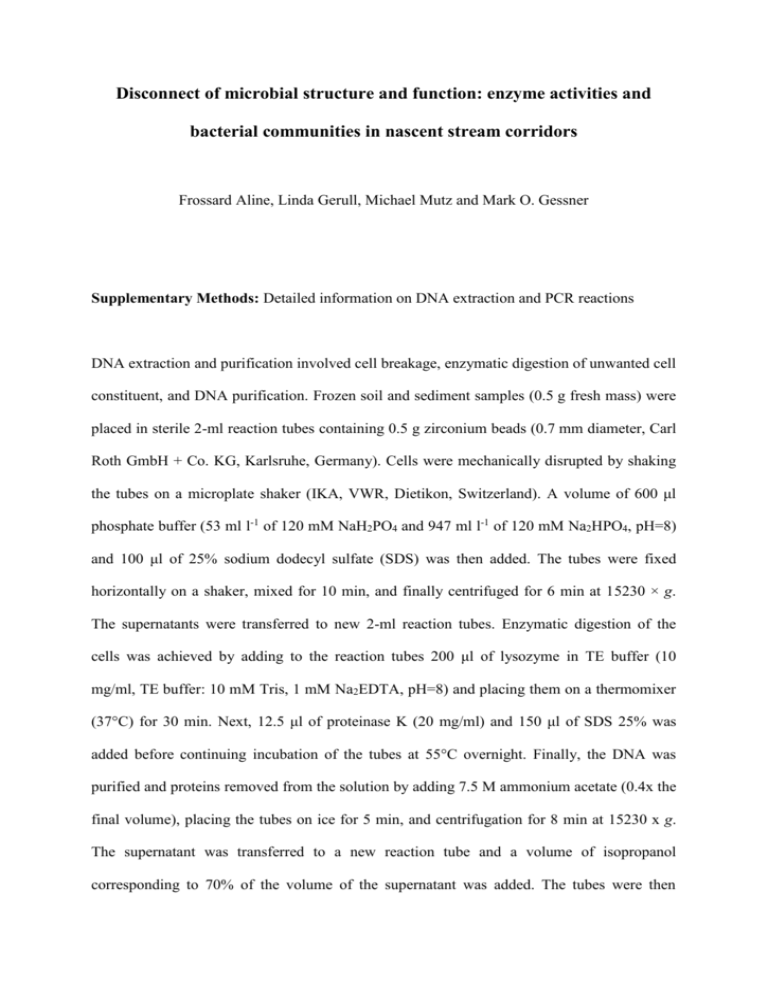
Disconnect of microbial structure and function: enzyme activities and bacterial communities in nascent stream corridors Frossard Aline, Linda Gerull, Michael Mutz and Mark O. Gessner Supplementary Methods: Detailed information on DNA extraction and PCR reactions DNA extraction and purification involved cell breakage, enzymatic digestion of unwanted cell constituent, and DNA purification. Frozen soil and sediment samples (0.5 g fresh mass) were placed in sterile 2-ml reaction tubes containing 0.5 g zirconium beads (0.7 mm diameter, Carl Roth GmbH + Co. KG, Karlsruhe, Germany). Cells were mechanically disrupted by shaking the tubes on a microplate shaker (IKA, VWR, Dietikon, Switzerland). A volume of 600 μl phosphate buffer (53 ml l-1 of 120 mM NaH2PO4 and 947 ml l-1 of 120 mM Na2HPO4, pH=8) and 100 μl of 25% sodium dodecyl sulfate (SDS) was then added. The tubes were fixed horizontally on a shaker, mixed for 10 min, and finally centrifuged for 6 min at 15230 × g. The supernatants were transferred to new 2-ml reaction tubes. Enzymatic digestion of the cells was achieved by adding to the reaction tubes 200 μl of lysozyme in TE buffer (10 mg/ml, TE buffer: 10 mM Tris, 1 mM Na2EDTA, pH=8) and placing them on a thermomixer (37°C) for 30 min. Next, 12.5 μl of proteinase K (20 mg/ml) and 150 μl of SDS 25% was added before continuing incubation of the tubes at 55°C overnight. Finally, the DNA was purified and proteins removed from the solution by adding 7.5 M ammonium acetate (0.4x the final volume), placing the tubes on ice for 5 min, and centrifugation for 8 min at 15230 x g. The supernatant was transferred to a new reaction tube and a volume of isopropanol corresponding to 70% of the volume of the supernatant was added. The tubes were then centrifuged for 60 min at 15230 × g and the supernatant discarded. The pellet was washed twice by shaking the tube with the pellet and with 600 μl of 80% ethanol for 15 s, centrifuging for 5 min at maximum speed (17135 × g), and discarding the supernatant each time. The pellet in the tube was then dried for 1-2 hours in a clean bench and finally re-dissolved in 100 μl of Nanopure water (4°C, overnight). The extracted and purified DNA was stored at -20°C. PCR amplification of the V3 region of 16S rDNA gene was performed in two steps to obtain enough DNA for the analyses. A first PCR was carried out using forward primer Eub338f (5’-ACT CCT ACG GGA GGC AGC AG-3’) and reverse primer Eub518r (5’-ATT ACC GCG GCT GCT GG-3’; Microsynth, Balgach, Switzerland). The same universal bacterial primers were used for the second PCR except that a 40 bp GC-clamp needed for denaturating gradient gel electrophoresis (DGGE) analysis was added to the 3’ end of the forward primer. The PCR reaction mix contained (final concentrations): 1x GoTaq® Flexi reaction buffer (Promega, Switzerland), 3 mM MgCl2, 0.25 mM dNTPs, 0.25 mM of each primer, and 1 U/μl GoTaq® Flexi DNA Polymerase (Promega, Dübendorf, Switzerland). DNA extract (2 μl) was added to each reaction mix and the final reaction volume adjusted to 20 μl. A first denaturation step was performed at 94°C for 5 min. Each of the following 31 amplification cycles consisted of a heat denaturation step at 94°C for 1 min, primer annealing at 65°C for 30 s and an extension phase at 74°C for 1 min. During primer annealing, a touchdown of 1°C per cycle was programmed for the first 10 cycles. The mix was then maintained at 74°C for 10 min for the final extension. The size and yield of the PCR products was checked on a 2% agarose gel containing a 100 bp ladder (Promega, Dübendorf, Switzerland).


